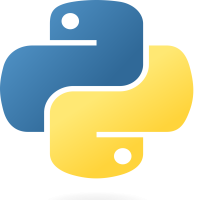
Python - Strings
13-Jan-2024Dive into the world of strings in Python. Learn how to manipulate text, perform string operations, and explore the versatility of working with character sequences in Python.
Strings in Python: Unraveling Textual Adventures
Strings in Python are sequences of characters, representing textual data. Understanding the characteristics and manipulations of strings is fundamental for text processing, data representation, and various programming tasks. Let's delve into the key aspects of strings:
1. String Declaration :
- Strings can be declared using single (') or double (") quotes.
# Example
message = 'Micro Tutorial' # single(') quotesmessage = "This is Micro Tutorial" # double(") quotes
2. String Concatenation :
- You can concatenate strings using the + operator.
# Exampletext1 = 'Micro'text2 = 'Tutorial'full_text = text1 + ' ' + text2print(full_text) # full_text = 'Micro Tutorial'
3. String Indexing and Slicing :
- Strings are iterable, and you can access individual characters using indices. Slicing allows extracting substrings.
# Example
word = 'MicroTutorial'first_letter = word[0] # first_letter = 'M'substring = word[0:5] # substring = 'Micro'
4. String Methods :
- Python provides a plethora of built-in string methods for tasks like case conversion, finding substrings, and replacing text.
# Example
sentence = 'This is Micro Tutorial'uppercase_sentence = sentence.upper() # uppercase_sentence = 'THIS IS MICRO TUTORIAL'
5. String Formatting :
- String formatting enables dynamic insertion of variables and expressions into a string.
# Example
name = 'John'age = 28greeting = f'Hello, {name}! You are {age} years old.'print(greeting) # Hello, John! You are 28 years old.
6. Escape Characters :
- Special characters in strings are represented using escape characters, such as \n for a newline.
# Example
multi_line = 'This is a multi-line\nstring'print(multi_line)
'''This is a multi-linestring'''
Understanding the intricacies of strings equips you to handle textual data efficiently, whether it's parsing user inputs, processing files, or constructing dynamic messages in your Python programs. Strings are versatile and play a central role in many aspects of Python programming.


